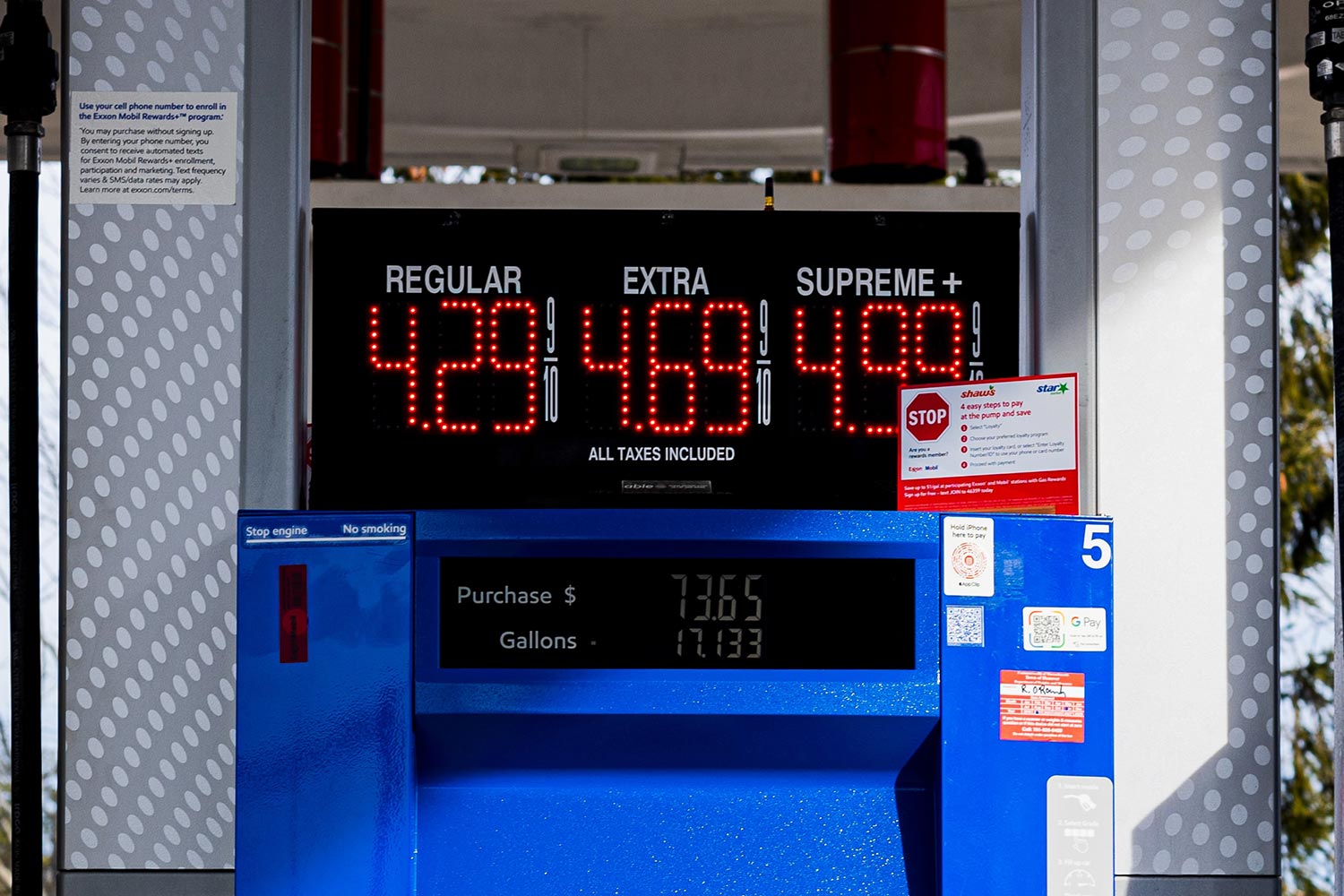Gas Rates, Volunteers, and Justice
Many people don’t realize that on their personal tax returns volunteers can deduct mileage expenses incurred as part of volunteering.

The high cost of driving is already discouraging some people from volunteering.
You may know that the IRS just raised the rate for the business-related mileage deduction to 58.5 cents. But did you know that the charitable driving deduction remains at only 14 cents a mile? So volunteers, who often use their cars to provide life-or-death services to people in need, are deriving less tax benefits as their driving expenses rise.
This issue is particularly important since, as the cost of gasoline soars, Americans are trying to drive less. The high cost of driving is already discouraging some people from volunteering, which should set off warning signals about things we sometimes take for granted.
Remember that…
Volunteers drive and deliver:
- Meals and other necessities to house-bound individuals
- Patients to doctor appointments and dialysis treatments
- Seniors on outings and field trips
- Children to visit their parents in prison
What’s more, volunteers must drive to:
- The sites of disasters and emergencies as firefighters and first responders
- The places where they volunteer as museum docents, hot-line answerers, tutors, and so much more
- Board meetings, the county fair where their organizations have exhibit booths, CPR training, and often hundreds of miles to conferences as well as service projects
This issue is particularly important since, as the cost of gasoline soars, Americans are trying to drive less.
An Ongoing Struggle
The tax deduction for driving as part of volunteer service has been at 14 cents for the last 10 years, having last been raised from 12 cents by the Taxpayer Relief Act of 1997. Some of us can remember the struggles in the 1970s and 80s to get past 7 cents a mile, and the determined efforts of now Senator Barbara Mikulski (D, Maryland) to champion better tax support for volunteer drivers.
Silence is not necessarily a sign that people don’t mind the cost. Most volunteers will wait a long time before mentioning that driving expenses are hurting them. Even worse, they may drop out of volunteering rather than ask for reimbursement. Rather than exploit the charitable nature of volunteers, shouldn’t we be working to support — rather than penalize — volunteering?
Here are first some short-term ideas, and then more on supporting changes in the nonprofit mileage rate.
Small Solutions for Right Now
Helping volunteers decrease their driving costs may give us an opportunity to address some things most volunteers have long wished to change anyway:
- Consider organizing carpools among volunteers, especially among employer-based volunteerism or to special events
- Raise funds specifically to reimburse volunteers for gas costs
- Have fewer-but-longer face-to face meetings, and supplement them with conference calls and listserv exchanges
- Actively focus on recruiting on people who can walk or bike to our sites
- Find ways to engage parents in volunteering while waiting for their children to be finished with sports, painting classes, or therapy
Changing the Law
In July 2008, the Internal Revenue Service (IRS) raised the business mileage deduction to 58.5 cents per mile (an increase of 16%). IRS Commissioner Doug Shulman commented, “We want the reimbursement rate to be fair to taxpayers.” The problem is: gas doesn’t cost any less for volunteers, yet the reimbursement rate of 14 cents per mile is 76% less than the business rate!
And… it turns out that this figure requires congressional legislation to change! The government gives lip service to “supporting and encouraging” volunteer and community service. Here is an opportunity for a simple, direct way of doing so.
Protest has come from various sources and Congress is responding. The Pennsylvania Association of Nonprofits has been one of the leaders of the effort to raise the charitable deduction rate and urges support of H.R. 2020, which would make the rate equivalent to any number set by the IRS for business-related driving. More information can be found at http://www.pano.org/publicpolicy/publicpolicy-irs_CRR.php. Collectively, we can remedy this injustice!
Sample Letter
Dear Representative/Senator _________________________:
It’s wonderful that the IRS has just increased the mileage deduction to 58.5 cents a mile in recognition of the high cost of gas. But do you realize that the charitable mileage deduction has remained at only 14 cents a mile for the last ten years?!
It requires Congressional legislation to raise this rate. Please act now and recognize the enormous contribution of volunteers who use their cars to:
- Deliver meals to those who are homebound and otherwise might not eat
- Drive seniors to necessary doctor appointments
- Make sure people without the means to drive or without mass transit can get medical treatments, visit family members in custodial care, and other vital services.
Please support a bill such as H.R. 2020 that makes the charitable deduction equal to the business deduction, and prevents new legislation from having to be introduced ever few years.
Volunteers deserve this support and assistance. Please change the law now.
You might also like:
- A Practical Guide to Getting and Keeping Nonprofit Volunteers
- Treasurers of All-Volunteer Organizations: Eight Key Responsibilities
- An Easy-to-Use Accounting Procedures Manual Template
- A Guide for Private Foundations: Tax Exemption and 990-PF Filing Requirements
- Why is it Hard to Give My Money Away? A Donor’s Perspective
You made it to the end! Please share this article!
Let’s help other nonprofit leaders succeed! Consider sharing this article with your friends and colleagues via email or social media.
About the Author
Susan J. Ellis is president of Energize, Inc., an international training, consulting, and publishing firm specializing in volunteerism. Susan has written 12 books on volunteerism and is known as an engaging speaker and thought-provoking writer. She is co-publisher of the international online journal, e-Volunteerism, and dean of faculty for the online volunteer management training program, Everyone Ready. She volunteered (without a court order) to write this article for Blue Avocado.
Articles on Blue Avocado do not provide legal representation or legal advice and should not be used as a substitute for advice or legal counsel. Blue Avocado provides space for the nonprofit sector to express new ideas. The opinions and views expressed in this article are solely those of the authors. They do not purport to reflect or imply the opinions or views of Blue Avocado, its publisher, or affiliated organizations. Blue Avocado, its publisher, and affiliated organizations are not liable for website visitors’ use of the content on Blue Avocado nor for visitors’ decisions about using the Blue Avocado website.







On August 1, 2008 Senators Schumer, Ensign, Feingold and Dodd introduced S.3429, the “Giving Incentives to Volunteers Everywhere Act of 2008” or the “GIVE Act of 2008”. My reading of the proposed legislation is that it would mean that the charitable deduction rate would be raised from the current rate of 14 cents to always be 70% of the IRS Standard Rate then in effect.
Also, there has been much confusion over the years about the difference between the allowable deduction rate and the amount of mileage reimbursment payment that is allowed for volunteers who are reimbursed for their mileage while conducting non-profit agency business. Again, if I read the proposed legislation correctly, clause 139c states, once and for all, that mileage reimbursements to volunteers are not income and the amount of those reimbursments would be established by the “standard business rate”. In our personnal communications with the IRS over the years, we were repeatedly told that the allowable amount of mileage reimbursement that could be paid to volunteers was the limit established by the standard business rate. Discussion continues among programs about the amount of mileage reimbursement that can be paid to volunteers, but this legislation, if passed, will put an end to the current confusion that apparently exists.
We encourage everyone to contact their Senators and Representatives and let them know that you and your organization support Senate Bill S.3429, the GIVE Act of 2008. And please hurry, as only about 2 weeks will remain in the current session for the bill to be passed.
Our non profit depends on volunteers and I noticed this disparity on gas mileage a year ago.I wrote a letter to Diane Fienstein about this issue. A month ago the reply I received was about the cost of gasoline and not about changing the tax code to help non profits. I’ve re written my letter in caps this time and maybe will get her attention.